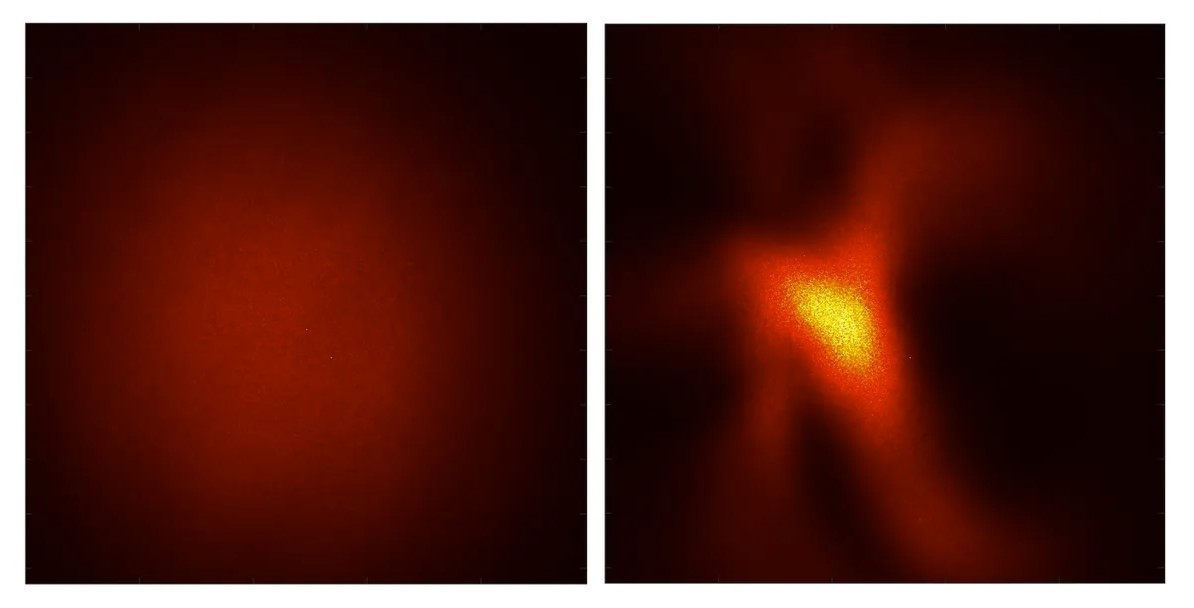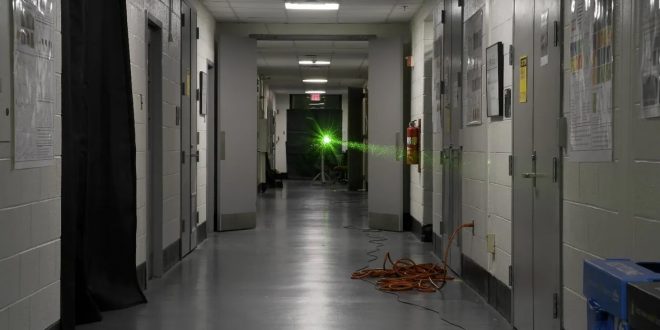Fiber optic cables are used in effective cable communication to send data. The maximum theoretical transmission efficiency of light sent through them is 92 percent. These fibers have drawbacks, but airborne laser signal transmission is incomparable to it. Researchers have been attempting to do the same across the air, though, for the past ten years, and they recently set a new record for distance.
The method was successfully tested in 2014 at the University of Maryland, where a team was able to transmit a laser 45 meters (148 feet) while maintaining a high transmission efficiency. They had to create an air waveguide, also known as an air fiber optic, in order to accomplish that. Without it, a laser (or any light beam) would enlarge as it moved, making it impossible to receive a signal after a certain distance.
They fired ultra-short pulses from a different high-energy laser to carve this waveguide. These produce plasma in the air along a filament. This hot state of matter heats the air, leaving a trail of low-density air in its wake, but the waveguide doesn’t travel along that path. A high-density core encircled by low-density air is required for the team. The laser transmission passed through the center of the ring used to create these filaments.
The group wanted to see how long one of these waveguides could be constructed for. They were therefore permitted to test this strategy down a lengthy hallway in the university.
Professor Howard Milchberg said in a statement that there were significant difficulties. “The enormous scale-up to 50 meters forced us to reconsider the fundamental physics of air waveguide generation, and wanting to send a high-power laser down a 50-meter-long public hallway naturally triggers major safety issues,” he said. “Fortunately, the physics and the Maryland environmental safety office provided us with excellent cooperation.”

On the left the laser received at the end of the halwlay without a waveguide. On the right, the same laser with a waveguide. Image Credit: Intense Laser-Matter Interactions Lab, UMD
20% of the signal could be transmitted using the air waveguide. The laser’s current range is 60 times longer than previous records, at 45 meters (147.6 feet). After that, in a laboratory setting, waveguides 8 meters (26 feet) long were successful in transmitting 60% of the signal. Data gathered indicate that they are not yet at the theoretical upper bound for this method and that greater guiding efficiencies are still possible.
Our findings suggest that the laser could have been modified for a longer waveguide if we had a longer hallway, according to Andrew Tartaro, a graduate student in physics at the University of Maryland who worked on the project and is an author on the paper. But our guide is accurate for the hallway we have.
A laser can travel thousands of kilometers in a single pulse of the waveguide, which lasts for about one hundredth of a second. Although the team doesn’t anticipate being able to extend the waveguide that far, they believe they can go a lot farther than the width of the hallway.
Milchberg claims that the achievement of the 50-meter scale for air waveguides “literally paves the way for even longer waveguides and many applications.” “We have the formula to extend our guides to one kilometer and beyond,” the researcher said, “based on new lasers we will soon receive.”
the article that Physical Review X has decided to publish.
 Tech Gadget Central Latest Tech News and Reviews
Tech Gadget Central Latest Tech News and Reviews




